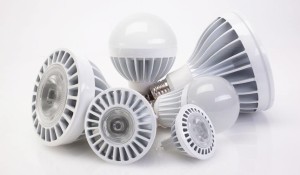 Purchasing LED light bulbs is much different than buying incandescent bulbs. Choosing an incandescent light bulb is rather straightforward and does not require a lot of consideration on your end. If you are investing in LEDs, however, there are a variety of factors you’ll want to consider to ensure that you what you choose best suits your needs.
Purchasing LED light bulbs is much different than buying incandescent bulbs. Choosing an incandescent light bulb is rather straightforward and does not require a lot of consideration on your end. If you are investing in LEDs, however, there are a variety of factors you’ll want to consider to ensure that you what you choose best suits your needs.
In this guide, we cover the top 3…
Socket
First and foremost, LEDs must fit into the socket you are going to screw them into, so you should first make sure that the bulbs you buy are compatible. There are four main types of sockets:
E27 – Also referred to as the Edison Screw, the E27 socket is round without sharp edges. It is denoted with a capital letter E and has a diameter of 27 mm.
E14 – The E14 is a small version of the E27, with a diameter of only 14 mm.
GU10 – The GU10 is smooth, cylinder-shaped socket with two opposing projections. The light bulb is inserted by pushing it against a spring. Once inserted, the light bulb is locked into place by turning it slightly.
G13 – The G13 is compatible with conventional tubular fluorescent lights. The tube has two contact points on each side that are inserted into socket. Like the GU10, the bulb is locked in by turning it slightly.
Light Intensity
LEDs vary in light intensity, which is commonly called the luminous flux, and measured in lumens. Luminous flux is the amount of light energy that the light source is able to emit in a given period of time. The higher the luminous flux, the brighter the light. You should pick light bulbs depending on where and how you plan to use them. For example, if you’re looking for decorative lights, an intensity of 130 to 240 lumens is enough. For a chandelier, the suitable intensity is around 800 lumens. In environments where intensive lighting is needed, 900 to 23,000 lumens is standard.
Color of the LEDs
LEDs emit a variety of different colors of light, depending on the type of bulb. The lower the color temperature, the “warmer” the color is and the more it reaches into the yellow, orange and red sections of the color spectrum. Conversely, the higher the value in kelvins is, the “colder” the color is and the bluer its character.
Warm White (WW) – Warm white ranges from 2.700 to 3.500 kelvins. Light bulbs that fall into this category, such as incandescent light bulbs, are suitable for rooms where feelings of comfort and warmth are the end goal, such as the living room.
Natural White (NW) – Natural white ranges from 4,000 to 4,500 kelvins and represents a transition between cold and warm.
Cool White (CW) – Cool white ranges from 5,000 to 7,000 kelvins and is designed to give off the impression of daylight. These lights are suitable for work environments, because the human brain responds by suppressing fatigue, rendering you less sleepy.
To put this all into perspective, a lit candle may reach 1,000 kelvins, the sun at sunset comes in around kelvins, daylight in the afternoon is around 5000 kelvins and daylight at high noon is 6000 kelvins. Light bulbs in solariums used in [city] can reach up to 14,000 kelvins.
Summary
LED bulbs represent an excellent alternative to traditional types of lighting. Two years ago, the United States banned the production of incandescent light bulbs, which means that as traditional bulbs burn out, they will have to be replaced with more modern types of bulbs, like CFL’s and LED’s. LEDs are the ideal replacement because they help you save money in the long run and help to preserve the environment in [city] due to their ecological friendliness.

![Berkeley Will Leave The [LED] Light On [city]](https://8blocks.s3.amazonaws.com/eepros/blog-images/2014/09/streetlamps-300x167.jpg)
![Impact of Dust on Your [city] Commercial LED Lighting [city]](https://8blocks.s3.amazonaws.com/eepros/blog-images/dust-effect-led.jpg)
![8 Reasons to Use a Lighting Dimmer in Your [city] Home [city]](https://8blocks.s3.amazonaws.com/eepros/blog-images/2016/11/render-1477041_640-300x169.jpg)
![The Quick and Easy 5-Step Guide to Picture-Perfect Kitchen Lighting [city]](https://eepros.com/wp-content/uploads/2018/06/kitchen-2400367_1280-300x200.jpg)